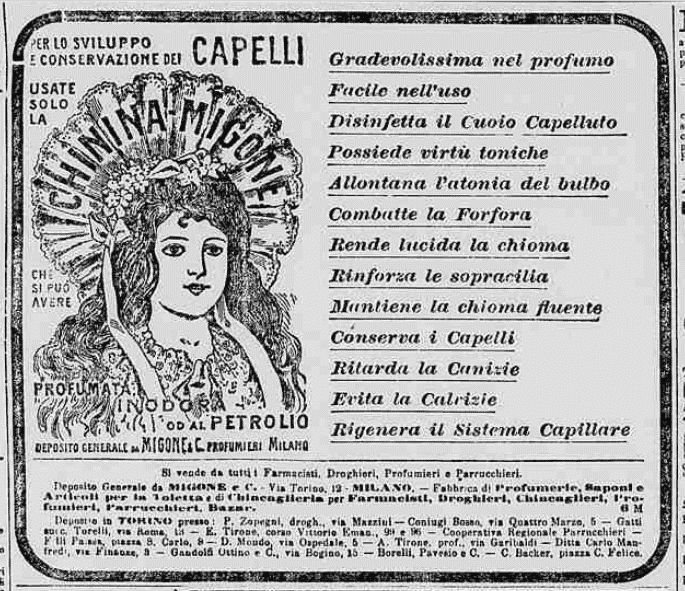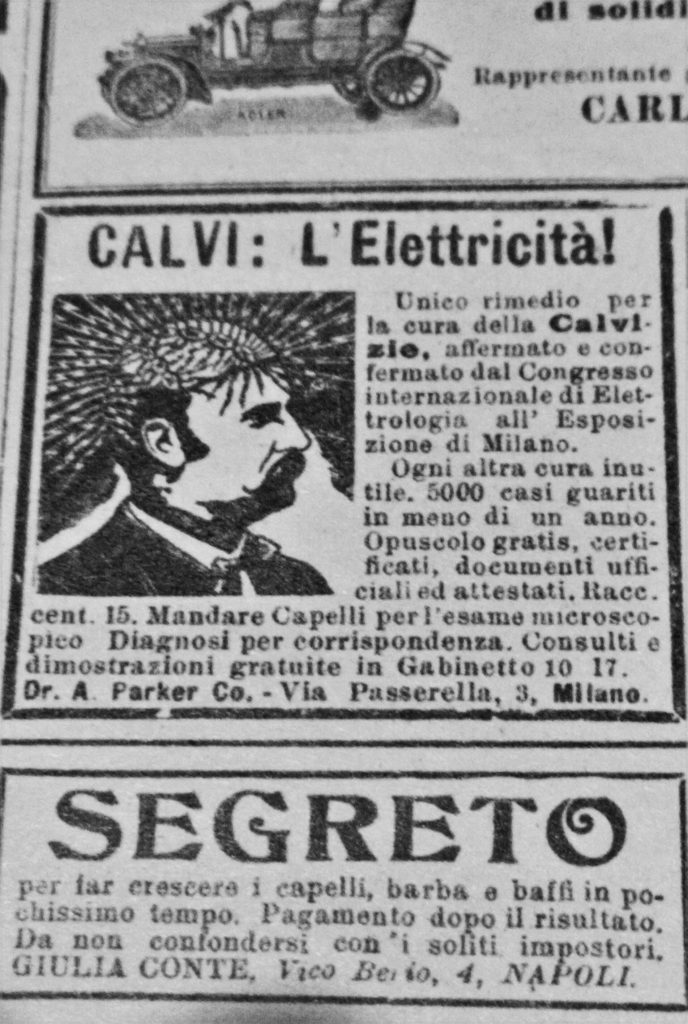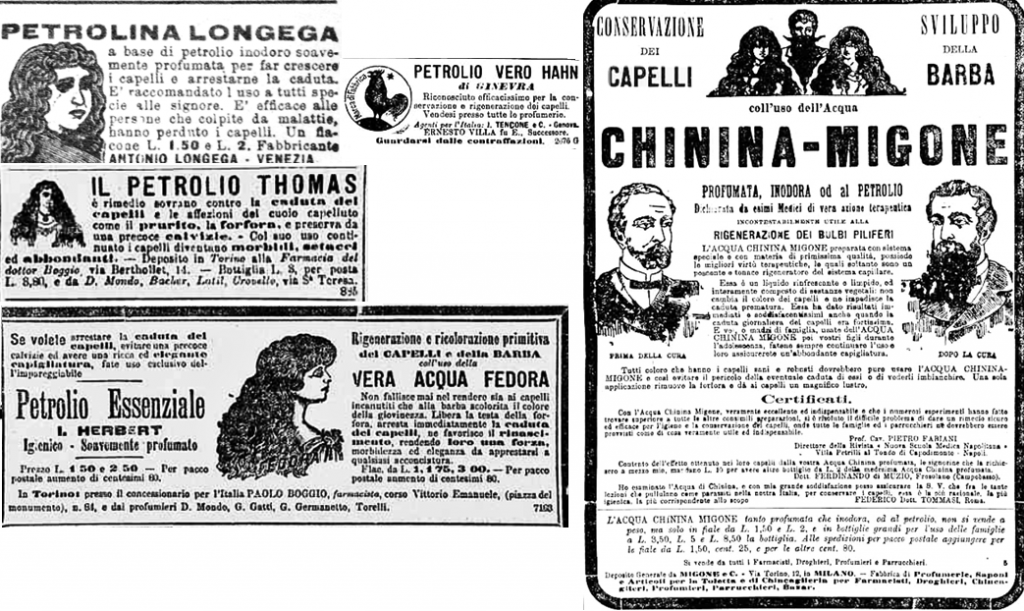
Strange petroleum-based products in the 1900s
In the early 1900s people were very attentive to their hair; on newspapers you could find many advertisements for products – sometimes very strange ones – which guaranteed healthy and thick hair.
Petroleum-based products, in particular, were very diffused.
In Italy, grocers and pharmacists were the first to sell gasoline; the latter used petroleum against lice, so they had the permission to commercialize fuel and other oil-based products. Anyway, this wasn’t the only pharmaceutical use for petroleum.
At the time, hair loss was a problem that worried many people, especially in the upper classes; obviously, not all products seemed to be very affordable. On the “Domenica del Corriere” we find a hardly reassuring advertisement of the “Secret” method of a certain Giulia from Naples, “to grow hair, beard and moustache in a very short time”. The article recommended “not to get confused by the usual impostors”, but we still have many doubts about the reliability of her mysterious “secret” method.

On the same magazine we find another more extravagant but not less implausible method, based on electricity: a “unique” and modern approach, “confirmed by the International Electrology Congress at Milan Expo 1906”. The article presented more than 5000 healed from baldness, and promised a diagnosis only by sending a sample of hair. The treatment? With electricity! Not very credible, isn’t it?
But let’s speak about petroleum! How could oil improve the health of the scalp? Obviously, oil-based products could easily kill lice, but what about baldness?
In general, there was a strong competition in this sector, with many products sold in Italian pharmacies.
“Polli Pharmacy” of Milan proposed, in 1899, its “petroleum for hair”, to stop loss, particularly in case of “serious illness”, “abundant dandruff and sweat”.
Another diffused product was the “unrivalled essential petroleum I. Herbert” from Turin, “hygienic” and “sweetly aromatic”, which ensured “rich and elegant hair”. It was often sold together with the “true Fedora Water” for “hair and beard regeneration”: basically, a dye that could stop hair loss.

The “true Hahn Petroleum” from Geneve, instead, was available in perfumeries: it was “highly effective for hair preservation and regeneration”.
“Thomas Petroleum” was launched in 1904, and it fought “illnesses of the scalp, like itching and dandruff”. Using it, your hair could become “soft and abundant”.
In 1909, in Venice, you could find the “Petrolina Longega”, a product based on odourless, softly perfumed petroleum, able to grow hair; it was recommended for everyone, “especially for ladies”.
Oil, however, wasn’t only the main ingredient of these products, but also a sort of modern fragrance. There was, for example, the “Chinina Mignone”, a new item for “hair growth and preservation” available in three versions: “Aromaric, odourless or petroleum”. It was made in Milan in a factory that produced also “perfumes, soap, toiletries, items for pharmacists, grocers, perfumers, hairdressers, bazar”.
Effectively, not properly medical offices!
Tags:
- chinina mignone
- pharmacist
- Benzina
- divertente
- Petrolio
- elettricità
- 1800
- farmacista
- 1900
- forfora
- Curiosità
- pidocchi
- bell’epoque
- fuel
- calvizie
- lice
- capelli
- petroleum
- farmacia
- hair
- rimedi
- hairdresser











